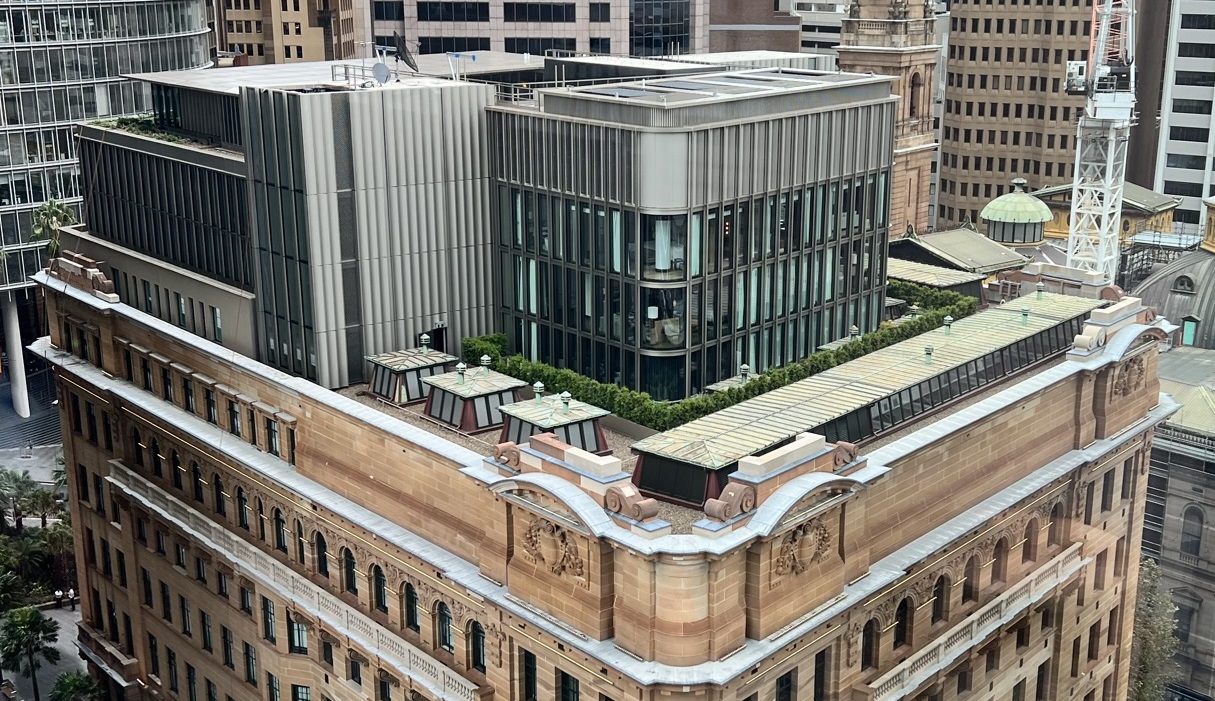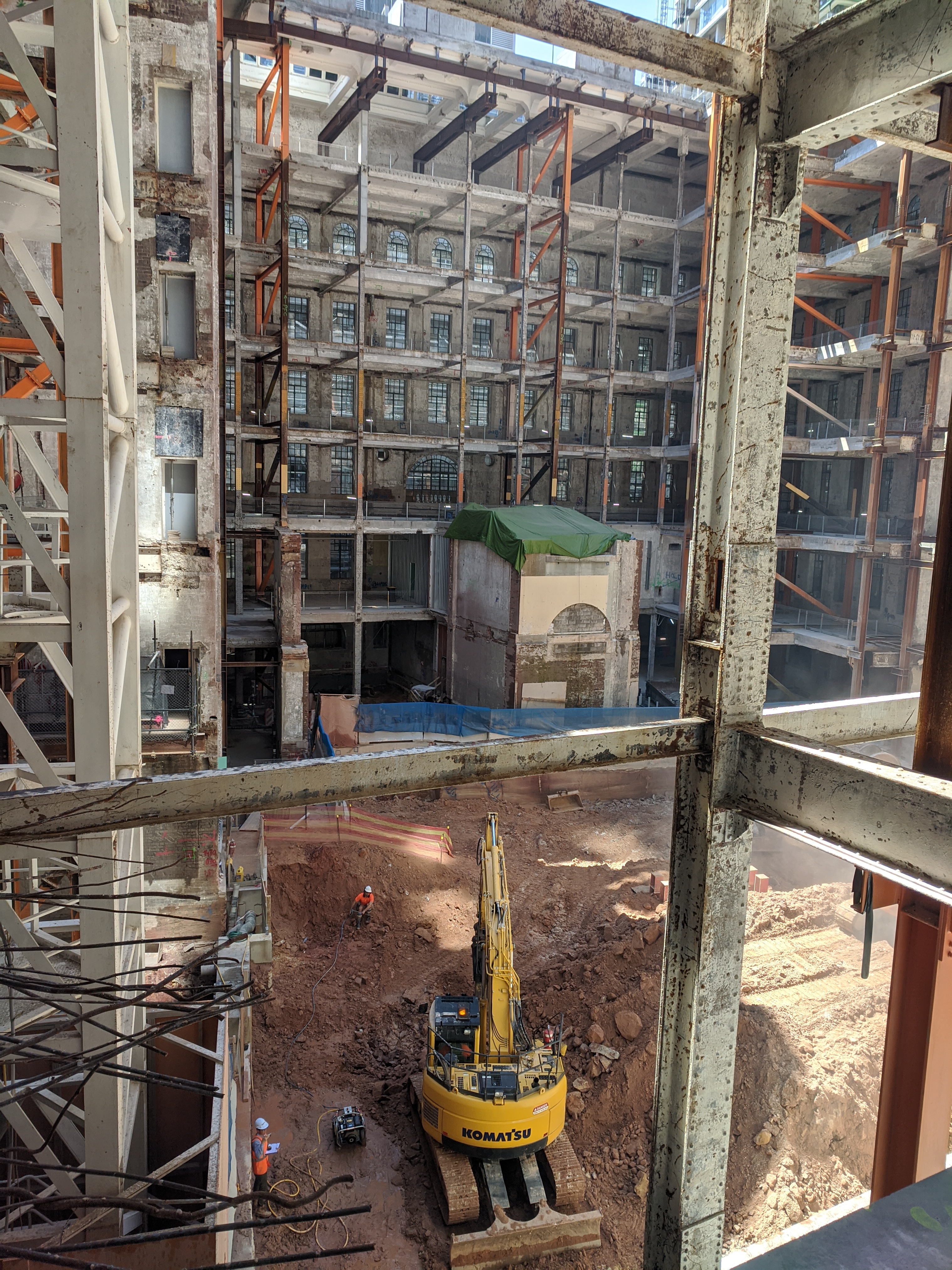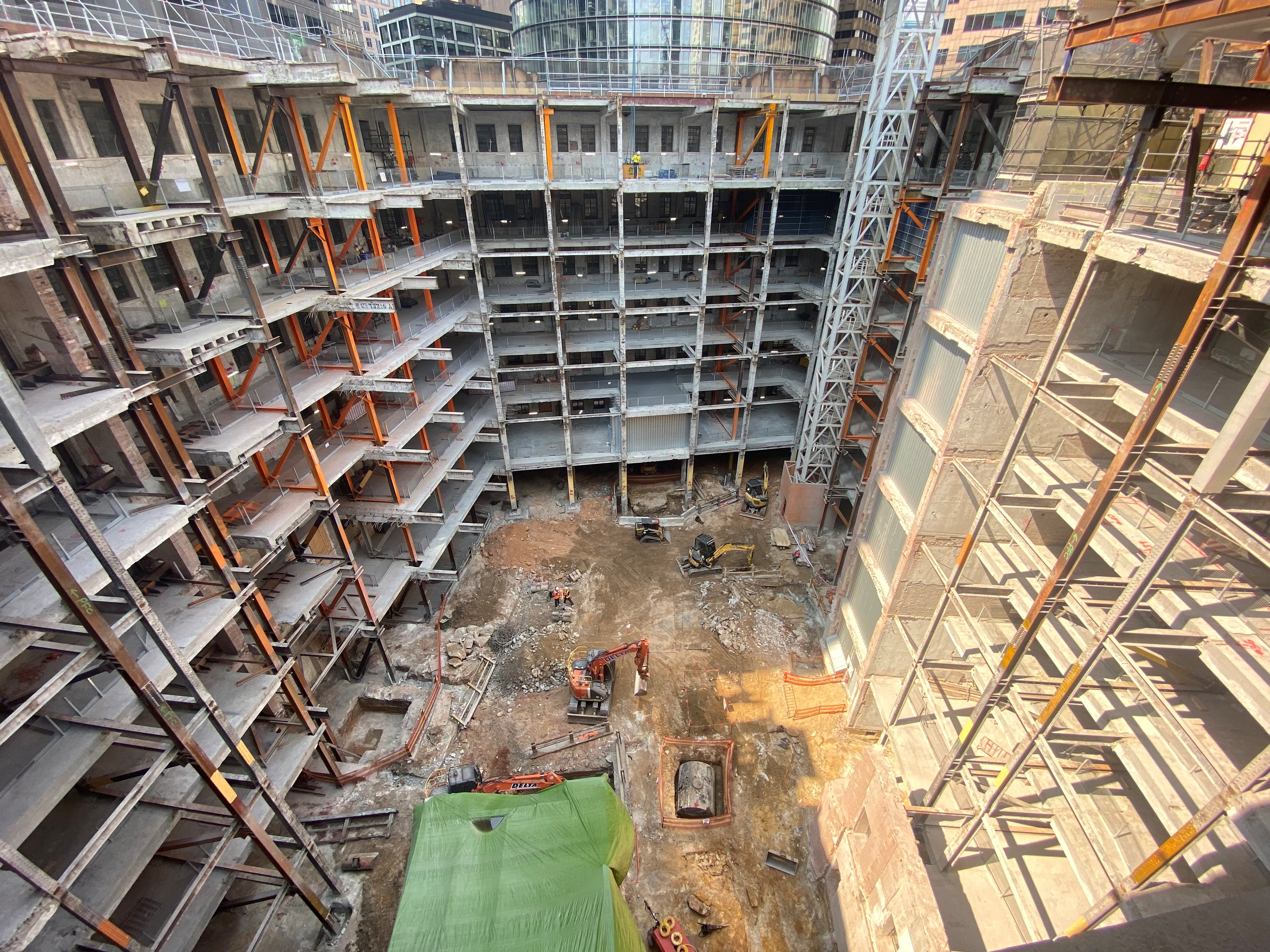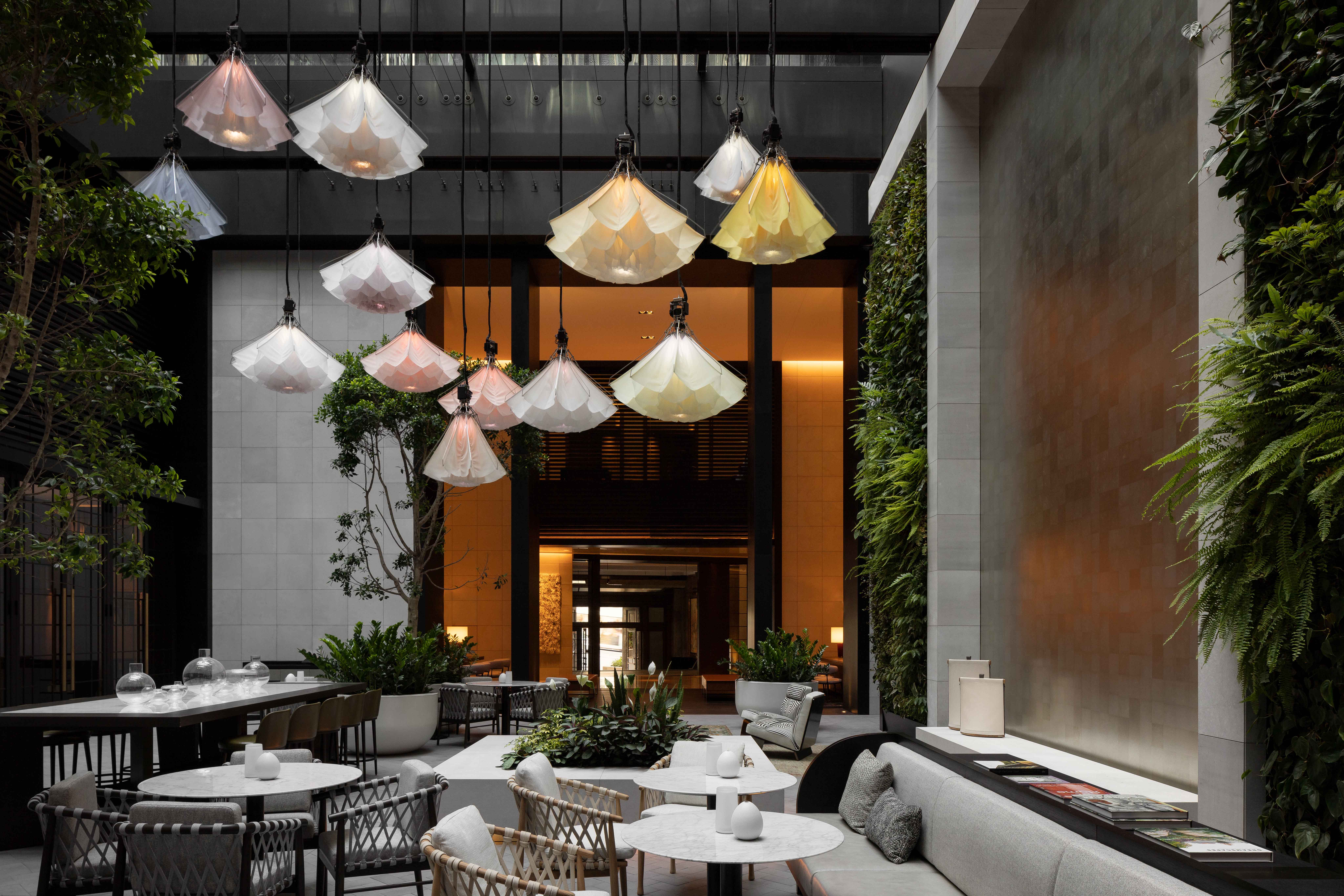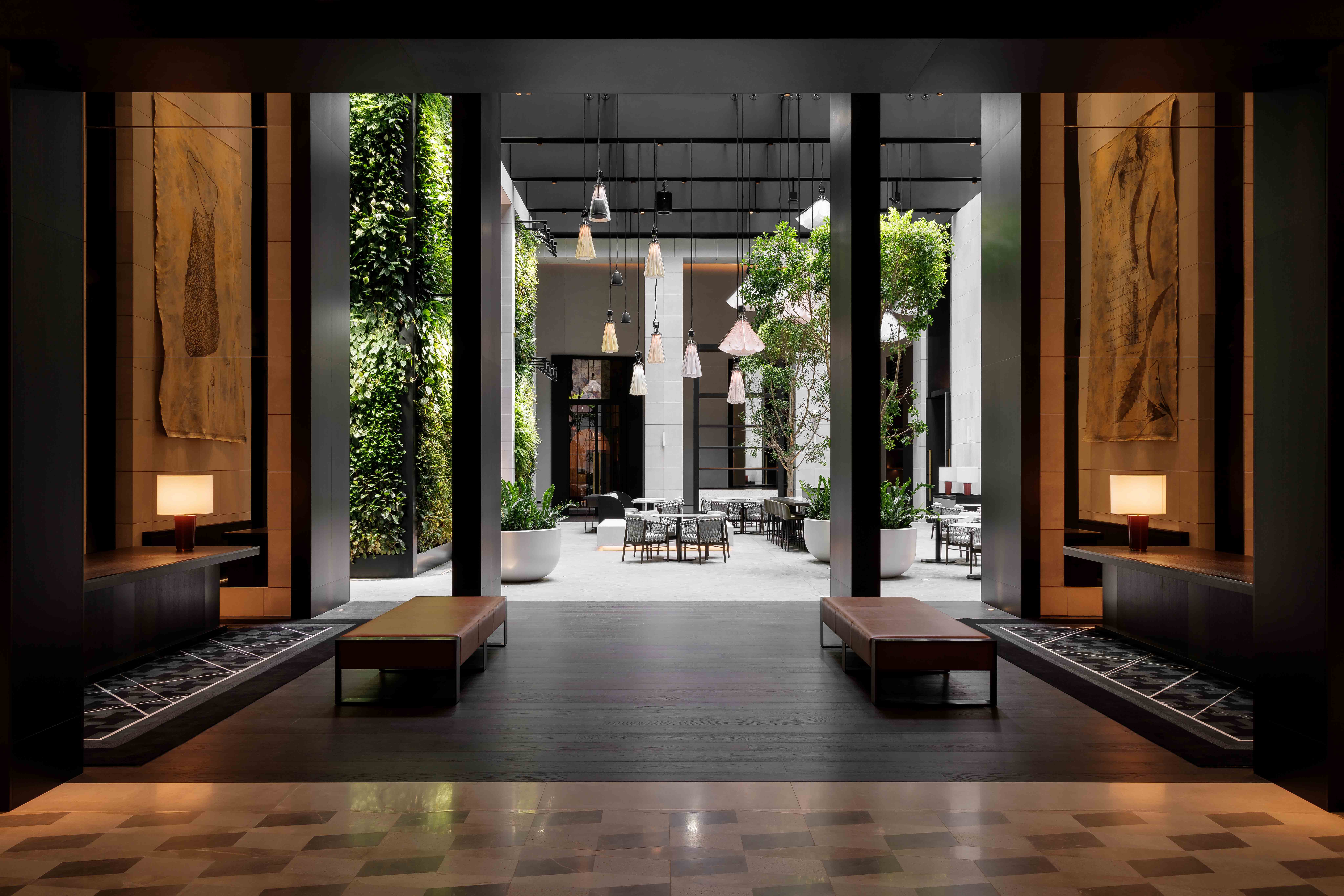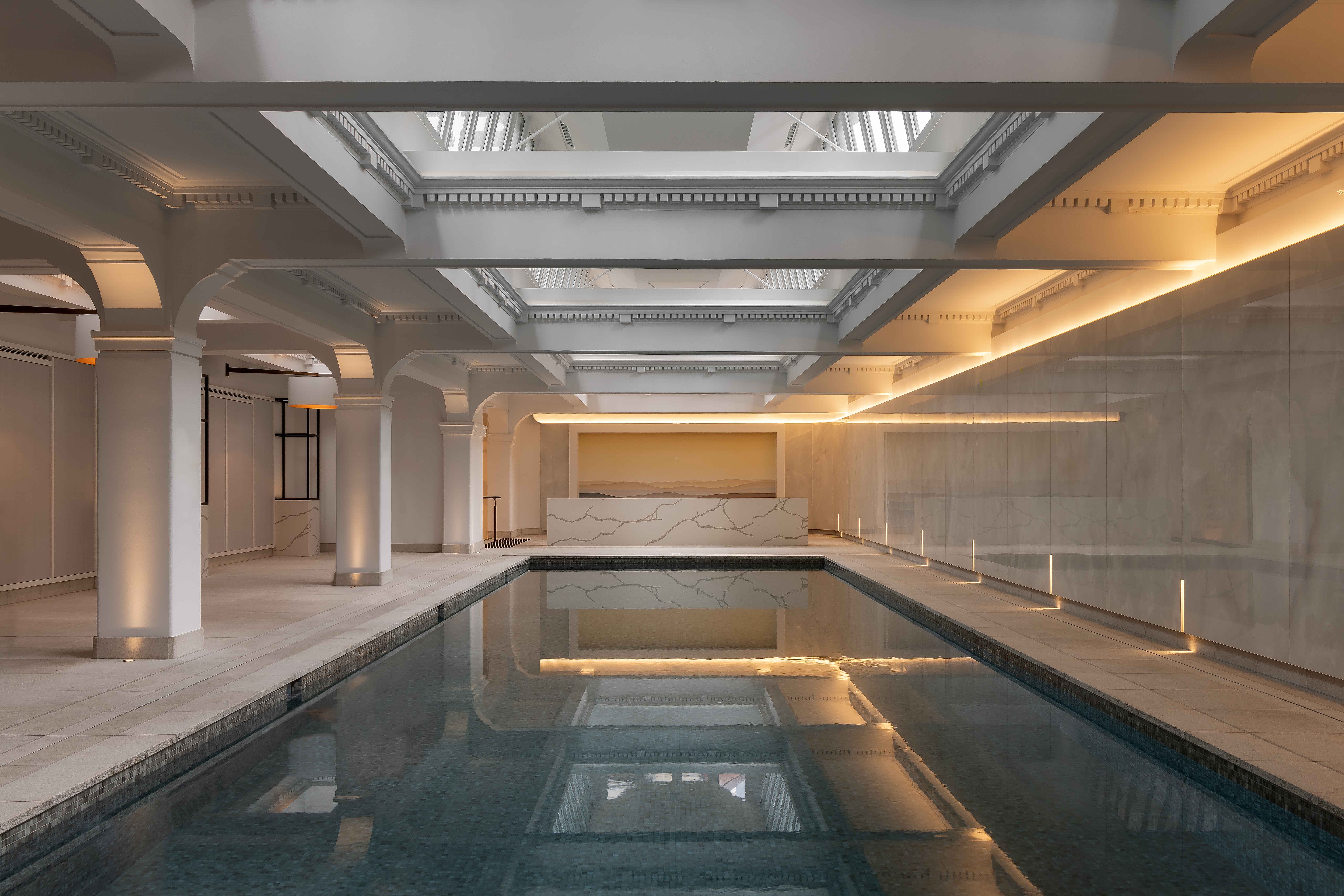This project involved extensive renovations and adaptation of a prominent, former Government Education Department Building to deliver a 6-Star luxury hotel.
Capella Hotel, Sydney transformed the state-listed heritage Education Building in the heart of Sydney into a world-class luxury hotel, effectively demonstrating how civic buildings can be honoured while being repurposed for future generations.
Originally constructed between c1912-1930 the sandstone building is in Sydney’s 'Sandstone Precinct' on Bridge Street. The building is one of the earliest examples of reinforced concrete in Australia and its historic complexities necessitated critical input from TTW’s heritage engineering specialists, contributing their in-depth knowledge and understanding of historical construction and materials conservation.
Adaptation involved the addition of four levels above the existing seven storeys, and the excavation of three levels of basement to provide 195 hotel rooms, bars and function rooms.
A feature of this building is a new 20m pool at level 5, which presented challenges to ensure that the existing structure was isolated from the pool to reduce vibration, the pool’s weight was supported, and to prevent any damage to the heritage fabric of the structure. TTW carried out a lateral analysis of the building incorporating the existing Sandstone and masonry façade, and its interaction with the new structure, which included reinforced concrete, structural steelwork, and lateral stability walls to demonstrate that the building had adequate earthquake performance without having to interfere with the existing heritage facade or the requirement to strengthen the existing heritage façade.
Our Heritage and Façade teams collaborated on providing full documentation for the conservation of external building fabric, including sandstone, trachyte and brick masonry, lead, slate and copper roofs, stuccowork, clinker concrete, seismic strengthening, cast iron, steel and timber windows, and glazed pavement lights.
Included in the Sandstones Precinct is the adjacent Lands Building constructed c1876-1892. Both the Lands and Education building are listed on the State Heritage Register. The Lands Building features four main levels with clock tower and roof dome above. A new tunnel links both buildings below street level.
Retaining Architectural and Social History
Originally built in two halves over a century ago, the building occupies an entire city block.
- TTW and the design team restored McRae’s original design intent where possible, including the reinstatement of its internal ground floor garden courtyard, accessible by the public
- The building rejuvenation and activation have contributed to revitalisation of the neighbourhood while delivering employment and tourism opportunities.
- Surrounding spaces have been repurposed for various uses like restaurants, bars, and meeting and function rooms.
- Retention of the façade and partial retention of the floors minimised the impact on the heritage fabric and reduced the carbon footprint of the new works.
- The refurbishment and remediation have significantly extended the life of this landmark building and is an excellent example of the adaptive reuse of an existing building.
- The Education building holds historical significance and by preserving it, we have preserved its heritage and maintained a tangible connection to the past. Restoring buildings like the Education building allows future generations to appreciate and learn from their rich history.
Design & Construction
Analysis
Due to a lack of existing drawings, structural verification of the existing structure required months of forensic engineering and analysis including:
- Sampling and laboratory testing of the steel, reinforcement, and concrete.
- Destructive testing core holing to investigate the original construction
- Analysis of original construction methods to understand past defects and cracking.
- Fire tests on the sandstone.
- Scanning of concrete slabs for reinforcement layouts.
- Lateral analysis of the building incorporating the existing sandstone and masonry façade, and its interaction with the new structure, which included reinforced concrete, structural steelwork, and lateral stability walls
Design
- Product testing and research delivered a product that could be applied to the existing heritage structure and finishes to meet BCA fire rating requirements without discolouring.
- Careful detailing of separation of columns supporting additional upper floors to heritage floors ensured minimal compromise to exiting heritage floors.
Construction
The building was constructed over two stages:
- Stage One - Steel framed construction with reinforced concrete floor slabs and load-bearing masonry façade.
- Stage Two - Non-load bearing façade with the introduction of steel columns into the façade. Reinforced concrete floor slabs supported by a steel frame.
Challenges and Resolutions
The building is located over a major geological fault, Post Office Fault
- Extensive testing and mapping of the extent of the fault, revealed a requirement for the basement extent to be setback from the sandstone perimeter walls to minimise potential settlement of the existing foundations.
- A rock-bolted shotcrete shoring system was adopted to stabilise the basement excavation.
Pool isolation
- Innovative engineering allowed the 20m pool to be suspended halfway up the building at Level 6 through an independent steel structure supported on springs to support the full vibration-isolated concrete pool from the heritage building.
- The pool was constructed using structural steel beams and plates as permanent formwork, deleting the need for back propping through the heritage building.
Historic structures and materials meeting current building codes
- To partially demolish the floors and excavate the basements, the existing heritage building had to be temporarily supported and stabilised by steel frames.
- Several temporary steel columns and floor beams remained as the final structure.
- The new structure was post-tensioned slabs supported by a combination of steel columns independent of the heritage structure.
Underground metro tunnels
- The new Metro rail tunnels run underneath the building requiring the ground floor to be acoustically isolated on rubber bearings to control the transmission of rail vibration.
The refurbishment has significantly extended the life of the landmark Education building while maintaining its connection to the past.
